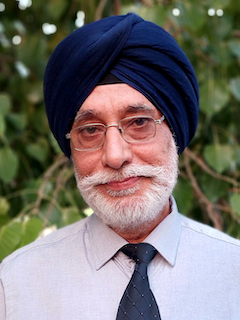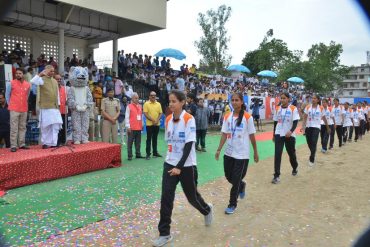
The Market features diverse goods, including colourful Tibetan handicrafts, traditional jewellery and prayer beads, handwoven carpets and textiles, Buddhist artefacts and thangka paintings, and local spices and dried fruits. Visitors can stroll through the wide lanes, browsing stalls with eye-catching merchandise. The absence of vehicular traffic creates a relaxed atmosphere, allowing tourists to explore leisurely.
The Market is also a cultural hub, with many Tibetan refugees and local Ladakhi people running the shops. It allows tourists to interact with locals and learn about their way of life. The Market offers a treasure trove of options for souvenirs or unique gifts. From prayer wheels to pashmina shawls, visitors can find authentic items that reflect the region’s rich heritage.
The Market’s pedestrian-friendly nature makes it an ideal spot for leisurely walks, people-watching, and immersing oneself in the local ambience. Its central location also makes it easily accessible from most accommodations in Leh. During the tourist season, the Tibetan Market attracts thousands of visitors daily. The peak tourist season, typically from June to September, sees the highest footfall as travellers worldwide experience Leh’s unique culture, shop for traditional Tibetan handicrafts, and enjoy the Market’s vibrant atmosphere.
The Market typically closes during the winter months. The harsh winter conditions, including heavy snowfall and freezing temperatures, make it challenging for vendors and visitors. Most market stalls and shops remain closed from late October to early March. During this period, most of the tourism infrastructure in Leh is also less active due to the extreme weather. However, some businesses in Leh remain open, catering to the needs of residents and a few adventurous tourists who visit the region in winter.
The street in Leh’s Tibetan Market was renovated and converted into a pedestrian plaza in 2016. This transformation aimed to enhance the market experience by creating a more pedestrian-friendly environment, allowing visitors to explore the vibrant stalls and local shops in a more leisurely and comfortable setting. The renovation also included improvements to the infrastructure, making the area more accessible and enjoyable for tourists and locals alike.
The renovation and upgradation of the Tibetan Market in Leh has been a significant project aimed at enhancing the visitor experience while preserving the area’s cultural essence. The pedestrian street has been repaved using local stone, serving multiple purposes, including maintaining authenticity, providing durability in the harsh Ladakhi climate, promoting sustainability, and creating a rustic, charming atmosphere that complements the Market’s character.
The addition of planters throughout the market area brings several benefits. In the arid landscape of Leh, the plants add a refreshing touch of nature, create a more pleasant and relaxing environment for shoppers, help improve air quality in the busy market area, and add colour and texture to the streetscape.
The installation of raised benches along the pedestrian street is a thoughtful addition. These benches provide comfortable seating for visitors to relax and enjoy the atmosphere, encourage interaction and create gathering spots, improve accessibility for elderly or mobility-impaired visitors, and offer better vantage points for viewing market activities.
These upgrades collectively transform the Tibetan Market into a more inviting and functional space. Using local materials and traditional design elements ensures that the renovations enhance rather than detract from the Market’s authentic character. The improvements make the area more pedestrian-friendly, encouraging visitors to explore the Market more and engage with local culture.
The one-way street in Leh’s Tibetan Market offers several advantages for shoppers. It improves traffic flow, reducing congestion and creating a more orderly environment. The street layout allows for wider footpaths, giving shoppers more space to browse comfortably. Shops benefit from increased visibility, as visitors have a clear view of both sides of the street. The pedestrian-friendly environment encourages people to spend more time in the Market, potentially boosting sales. These features make the Tibetan Market a more appealing shopping destination with a pleasant pedestrian experience.
In the heart of Leh’s Tibetan Market, a charming selfie point is a favourite among locals and visitors alike. This spot offers a stunning backdrop of the snow-capped Himalayan peaks. The Market’s lively atmosphere and breathtaking mountain scenery create a perfect contrast that makes your selfies stand out.

Visitors who wander through this vibrant marketplace can purchase unique souvenirs and engage with local culture meaningfully. The Tibetan Market stands as a model for sustainable tourism development, offering a perfect blend of commerce, culture, and community that leaves a lasting impression on all who visit this Ladakhi gem.
All photos are by the author

Sarbjit Bahga (b1957) is a Chandigarh-based architect, author, photo artist, and archivist. He is the Principal Architect of Bahga Design Studio LLP. Earlier, Bahga worked in the Department of Architecture, Punjab, Punjab Health Systems Corporation, and Punjab Mandi Board in various positions.
He has more than 42 years of practical experience designing various types of buildings, complexes, and large campuses. His completed works include an eclectic range of administrative, recreational, educational, medical, residential, commercial, and agricultural buildings. A monograph on his selected works titled “MODERN REGIONALISM: The Architecture of Sarbjit Bahga” has been published.
Bahga is also a keen researcher and a prolific architectural writer. He has 12 books to his credit, which include Modern Architecture in India, New Indian Homes, Le Corbusier, and Pierre Jeanneret: The Indian Architecture, Trees in Urban Habitat, Landscaping Human Habitat, New Indian Architecture -1947-2020, and Hand-Drawn Perspectives and Sketches. Bahga’s contribution to architecture has been largely recognized. He is a three-time recipient of the World Architecture Community Awards. His name has been featured in the Guinness Book of World Records for designing the “longest covered concrete corridor” in Vidya Sagar Institute of Mental Health, Amritsar.















